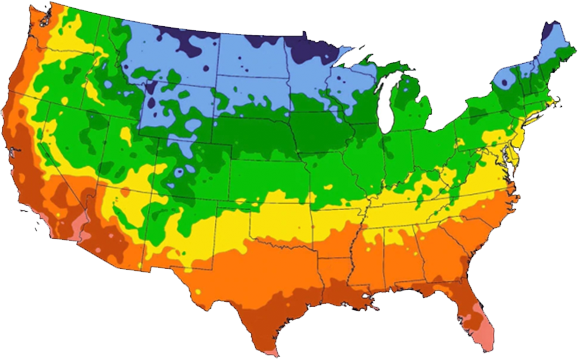The United States Department of Agriculture (USDA) has devised a system to provide gardeners with a basic guide to plant hardiness – how much winter cold a plant can withstand. The Hardiness Zone Map system divides the United States and Canada into numbered zones based on lowest average winter temperature. Even within a zone, different micro-climates exist, such as large urban areas which may be warmer or land situated at different elevations.
The Hardiness Zone Map is a valuable tool but it is not foolproof. There are a variety of factors that can influence the hardiness of a given plant in a garden. These factors include: soil type, drainage, snow cover, exposure to wind, winter, rainfall (or lack of), as well as fluctuations in temperature.
How it works on our site
If you’ve entered your zip code, as you browse plants, you’ll see a message in red indicating if a specific plant will not survive in your zone. You’ll also see the message repeated in your cart when you go to check out. We implemented this to help gardeners better understand what plants will thrive for them, however, as we say above, the USDA hardiness zone is far from foolproof, and there are so many factors that determine how well a plant can perform in a given area. We definitely encourage informed experimentation, and our customer service team is always happy to answer any questions you have, as well as make recommendations for you. You can also read more about plant hardiness in our blog.
If you’d like to change the zip code you are shopping with, simply where it says “Growing Zone” above and enter a new zip code. Which USDA hardiness zone you are shopping with is indicated in pink next to that growing zone text.
